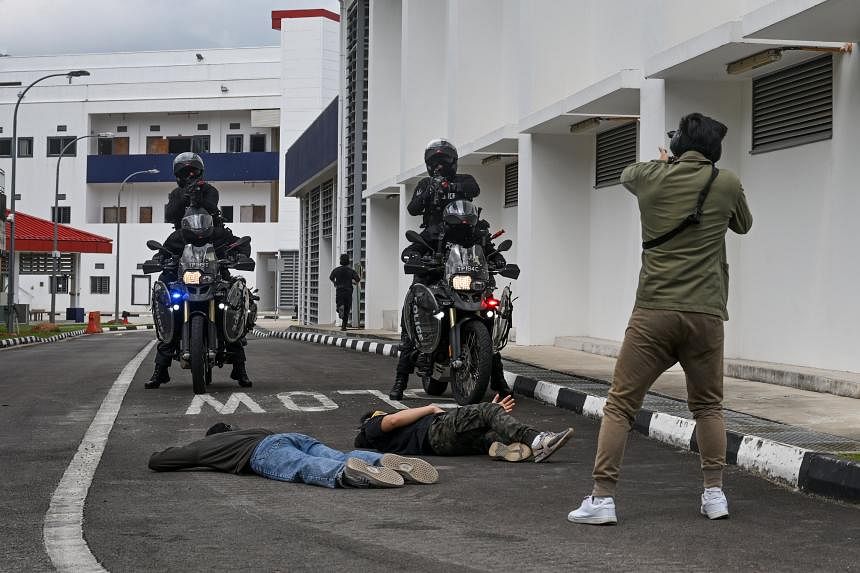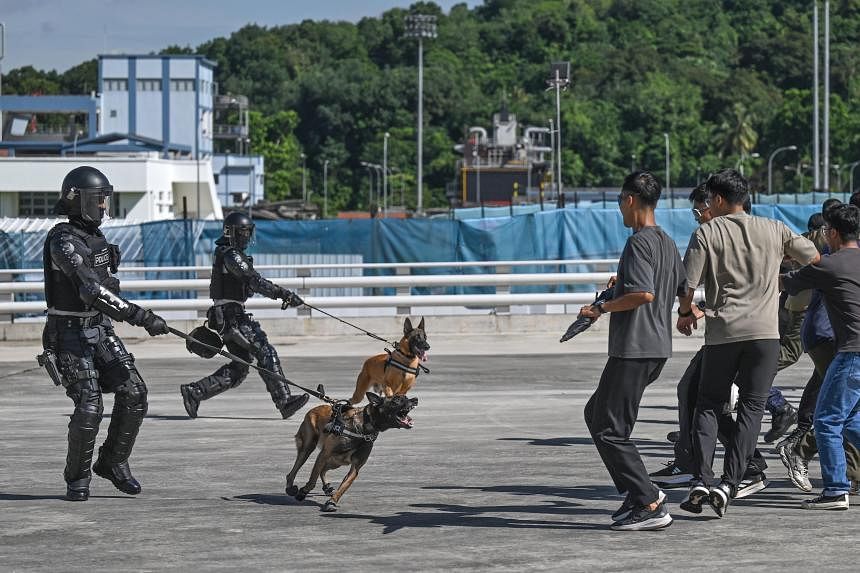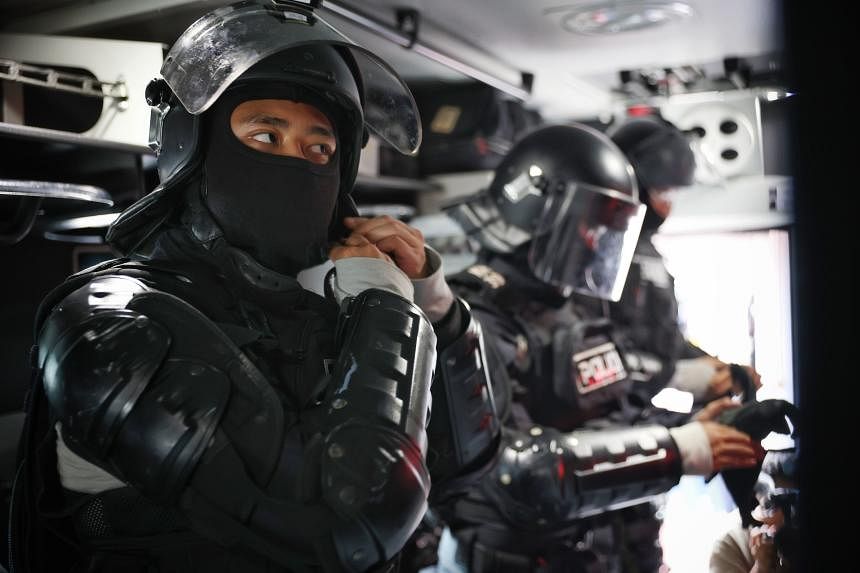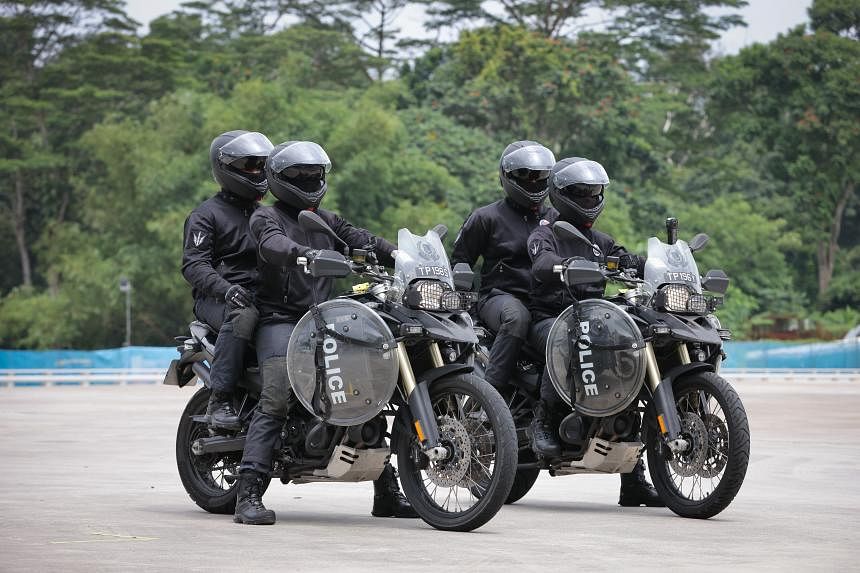SINGAPORE - Riot police on motorbikes, police dogs trained to intimidate, and pepper spray that stings the eyes – these are what rioters will face when the Special Operations Command (SOC) moves in.
In the past decade since the Little India riot on Dec 8, 2013, the SOC – the police’s elite force – has raised its capabilities.
The Straits Times got an exclusive look at the methods that the SOC uses to respond to public order and security incidents.
The Committee of Inquiry (COI) convened to probe the Little India riot, the worst public order incident in Singapore since the racial riots in the 1960s, found several lapses by the police. These included communication gaps, a poor decision to hold their positions and making arrests too late.
Vehicles carrying SOC officers were also bogged down by heavy traffic. This allowed rioters to burn and overturn unoccupied emergency vehicles, including police cars.
In total, 62 people, including 37 police officers and 12 Singapore Civil Defence Force (SCDF) officers, were injured.
As a result of the riot, the SOC now has Rapid Deployment Troops (RDTs) who can ride to incident sites quickly on motorbikes.
Started in 2017 as part of the SOC’s Police Tactical Unit, these troops can ride their bikes over road kerbs and go off-road.
They can also go up steps and weave through heavy traffic – which officers executed smoothly during demonstrations at the Home Team Tactical Centre in Mandai and a busy junction in Orchard Road on Nov 14.
Assistant Superintendent of Police (ASP) Mohamad Junaidi Rabian, officer commanding in one of the RDT teams, said: “With more targeted different training terrains, RDT trainings are specialised to respond swiftly to both public order and public security incidents.”
The black BMW motorbikes, known as Tactical Response Motorcycles, have blinker lights, sirens and a special latch that carries two riot shields.
For public order incidents, both rider and pillion carry up to 20kg of gear each, including a vest, helmet and P4 rifle – a less lethal weapon that fires pepper spray and paint to mark out rioters.
Their helmets have a camera that records the events of an incident, which can help in investigations.
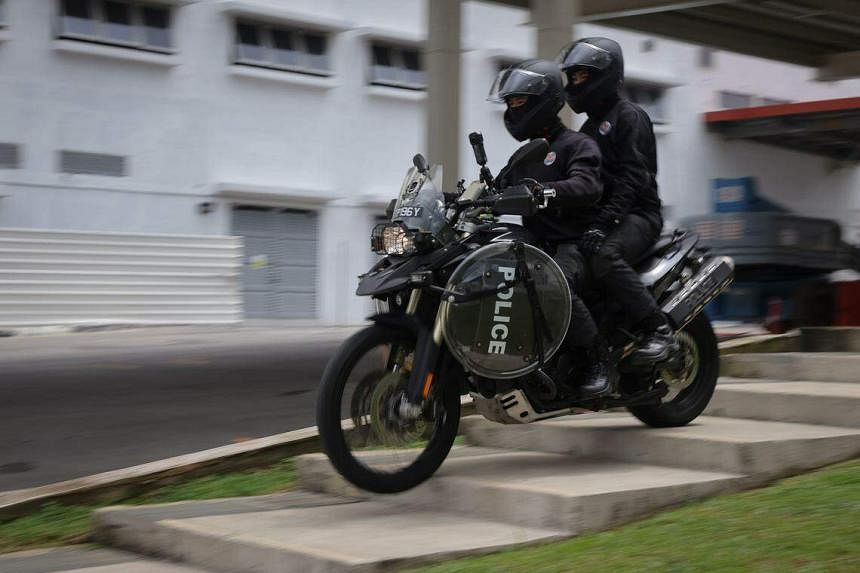
RDTs also respond to terrorist incidents, as they showed by subduing “gunmen” during the demonstrations.
The officers riding pillion took aim and fired shots from their rifles – all while on the motorbikes.
Each RDT team has about 30 officers. The number of responding officers in each incident depends on the situation.
ASP Junaidi said the RDTs are always on duty to respond to islandwide emergencies.
They also conduct patrols to complement the police land divisions in maintaining public order and security.
Public order dogs from the police K-9 unit may also be activated during a riot. The police did not have such dogs during the Little India riot.
Facing around 20 “rioters” in a demonstration, two belgian malinois and their handlers rushed in front of police troopers.
The dogs barked at the rowdy “rioters”, who backed off.
But when the mayhem continued, the dogs sprinted towards the group in a zigzag pattern.
This method is called fending and is used to disperse crowds. True enough, it sent the “rioters” running.
Senior Staff Sergeant Hafiz Maideen, a public order dog handler, said the police started using dogs for public order purposes in 2017.
These canines have other roles, such as guarding those arrested and patrolling critical infrastructure, he added.
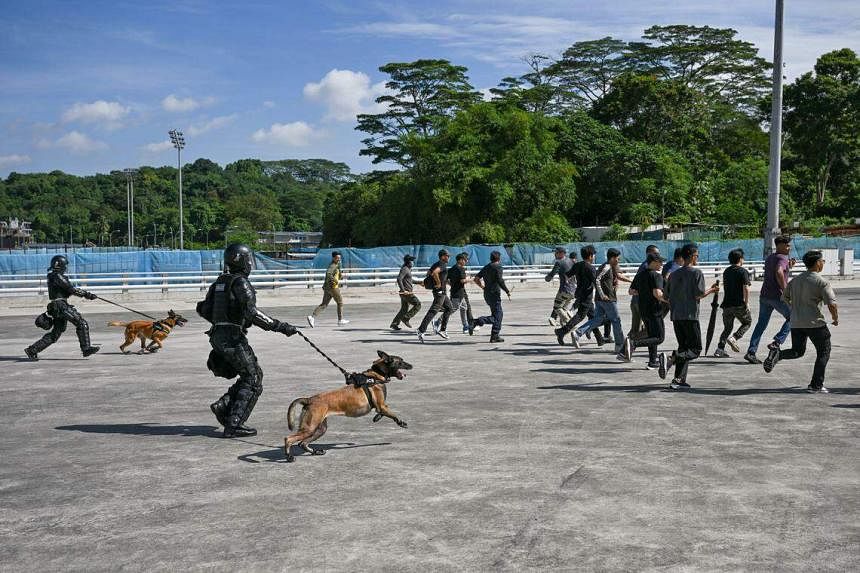
And the police have a new pepper spray – the oleoresin capsicum spray.
It causes a burning sensation when sprayed on the eyes.
While tear gas can be used in wide areas, this pepper spray can be used on specific targets.
In a confrontation, the officer asks the target if he will surrender. If the target does not, the officer swipes his glove – already sprayed with the liquid irritant – directly onto the target’s eyes.
Deputy Assistant Commissioner (DAC) Yong Wei Jun, assistant director of the specialist capabilities and doctrines department, said this swiping technique reduces the risk of contaminating others nearby.
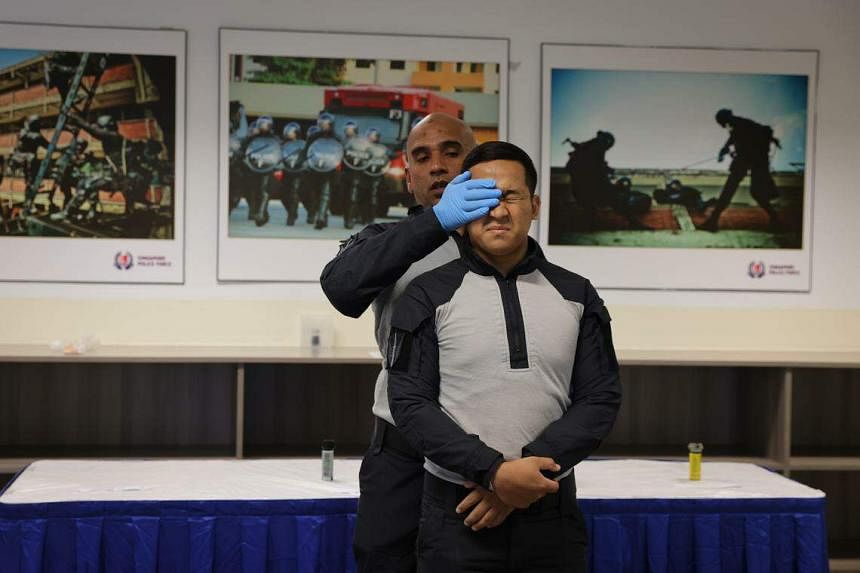
The police have a milder irritant, PSi Pro, made from ingredients including ginger, lemongrass and mint.
It smells like aromatic oil, but do not let the fragrance fool you. It takes only one spray from an officer 2m away for a person’s eyes to sting and tear up immediately.
The piercing pain forces the eyes shut and causes temporary disorientation.
Fortunately, the irritant can be quickly washed off with saline water.
DAC Yong said the police may use PSi Pro for general operational purposes, such as within lock-ups.
It will be used to deal with non-compliant or violent subjects to de-escalate the situation.
The police said anyone who is sprayed will have the irritant flushed out and go through medical checks if needed.
Senior Assistant Commissioner of Police (SAC) Arthur Law, commander of the SOC, said other changes in the police include new personal protective equipment for officers and an upgraded fleet of vehicles.
The SOC’s new Tactical Strike Vehicle was unveiled at the Police Workplan Seminar 2023. It is a heavily fortified vehicle fitted with an armoured body and protective mesh.
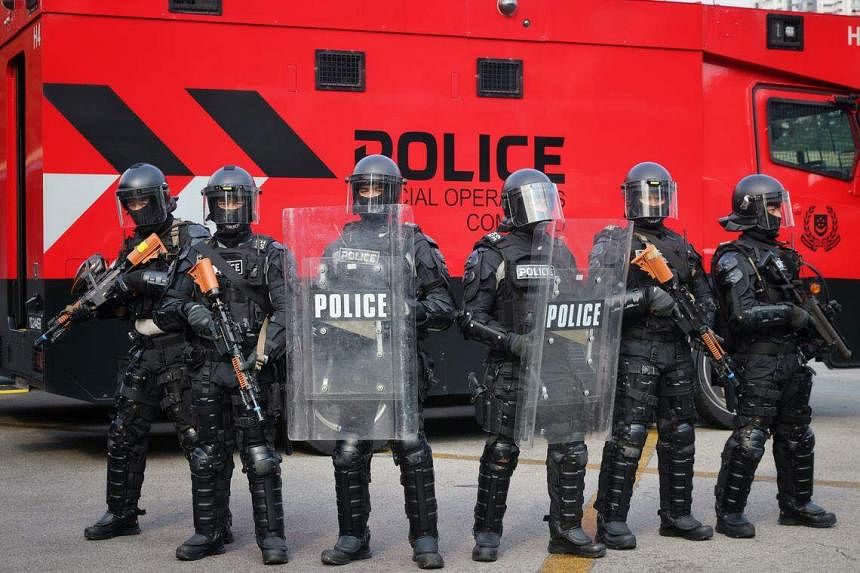
The SOC is now also able to use drones, which can mark targets before a police dog, a specialised dutch shepherd from the K-9 unit, is released to attack and incapacitate them.
SAC Law, who was deputy commander of Central Division at the time of the Little India riot and present at the scene, said: “I’m now more confident of the efficacy of our training and of our anti-riot tactics. It has cemented my belief that a consistent and rigorous training regime will help us maintain a capable public order force.
“Personally, I do not hope such an incident will happen again, ever. But if it should happen, I hope that we are ready for it.”
